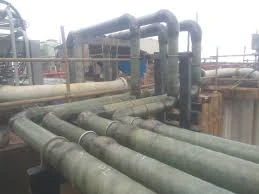
-
 Afrikaans
Afrikaans -
 Albanian
Albanian -
 Amharic
Amharic -
 Arabic
Arabic -
 Armenian
Armenian -
 Azerbaijani
Azerbaijani -
 Basque
Basque -
 Belarusian
Belarusian -
 Bengali
Bengali -
 Bosnian
Bosnian -
 Bulgarian
Bulgarian -
 Catalan
Catalan -
 Cebuano
Cebuano -
 China
China -
 China (Taiwan)
China (Taiwan) -
 Corsican
Corsican -
 Croatian
Croatian -
 Czech
Czech -
 Danish
Danish -
 Dutch
Dutch -
 English
English -
 Esperanto
Esperanto -
 Estonian
Estonian -
 Finnish
Finnish -
 French
French -
 Frisian
Frisian -
 Galician
Galician -
 Georgian
Georgian -
 German
German -
 Greek
Greek -
 Gujarati
Gujarati -
 Haitian Creole
Haitian Creole -
 hausa
hausa -
 hawaiian
hawaiian -
 Hebrew
Hebrew -
 Hindi
Hindi -
 Miao
Miao -
 Hungarian
Hungarian -
 Icelandic
Icelandic -
 igbo
igbo -
 Indonesian
Indonesian -
 irish
irish -
 Italian
Italian -
 Japanese
Japanese -
 Javanese
Javanese -
 Kannada
Kannada -
 kazakh
kazakh -
 Khmer
Khmer -
 Rwandese
Rwandese -
 Korean
Korean -
 Kurdish
Kurdish -
 Kyrgyz
Kyrgyz -
 Lao
Lao -
 Latin
Latin -
 Latvian
Latvian -
 Lithuanian
Lithuanian -
 Luxembourgish
Luxembourgish -
 Macedonian
Macedonian -
 Malgashi
Malgashi -
 Malay
Malay -
 Malayalam
Malayalam -
 Maltese
Maltese -
 Maori
Maori -
 Marathi
Marathi -
 Mongolian
Mongolian -
 Myanmar
Myanmar -
 Nepali
Nepali -
 Norwegian
Norwegian -
 Norwegian
Norwegian -
 Occitan
Occitan -
 Pashto
Pashto -
 Persian
Persian -
 Polish
Polish -
 Portuguese
Portuguese -
 Punjabi
Punjabi -
 Romanian
Romanian -
 Russian
Russian -
 Samoan
Samoan -
 Scottish Gaelic
Scottish Gaelic -
 Serbian
Serbian -
 Sesotho
Sesotho -
 Shona
Shona -
 Sindhi
Sindhi -
 Sinhala
Sinhala -
 Slovak
Slovak -
 Slovenian
Slovenian -
 Somali
Somali -
 Spanish
Spanish -
 Sundanese
Sundanese -
 Swahili
Swahili -
 Swedish
Swedish -
 Tagalog
Tagalog -
 Tajik
Tajik -
 Tamil
Tamil -
 Tatar
Tatar -
 Telugu
Telugu -
 Thai
Thai -
 Turkish
Turkish -
 Turkmen
Turkmen -
 Ukrainian
Ukrainian -
 Urdu
Urdu -
 Uighur
Uighur -
 Uzbek
Uzbek -
 Vietnamese
Vietnamese -
 Welsh
Welsh -
 Bantu
Bantu -
 Yiddish
Yiddish -
 Yoruba
Yoruba -
 Zulu
Zulu
frp launder
Understanding FRP Launders Revolutionizing Water Management in Industries
In the current era where environmental sustainability and efficiency are paramount, various industries are on a constant lookout for innovative solutions to their water management challenges. One such advancement is the usage of Fiber Reinforced Polymer (FRP) launders. As versatile and resilient structures, FRP launders are redefining how we handle liquid flow in numerous applications, particularly within water and wastewater treatment facilities.
What are FRP Launders?
FRP launders are trough-like structures made from Fiber Reinforced Polymer, a composite material composed of a polymer matrix reinforced with fibers, typically glass or carbon. This unique combination not only provides strength and durability but also inherently resists corrosion, making FRP launders ideal for environments where traditional materials like steel or concrete might fail over time.
Key Benefits of FRP Launders
1. Corrosion Resistance One of the primary advantages of FRP is its resistance to harsh chemical environments. In wastewater treatment plants or industrial settings where corrosive chemicals are prevalent, FRP launders maintain structural integrity without the need for regular maintenance or replacement.
2. Lightweight Yet Strong Compared to traditional materials, FRP is considerably lighter, which simplifies installation and reduces the overall load on existing structures. This lightweight nature also leads to reduced transportation costs and easier handling on-site.
3. Customizable Designs Manufacturers can create FRP launders in various shapes, sizes, and configurations to meet specific project requirements. This customization capability allows industries to optimize their designs for maximum efficiency in water flow management.
4. Longevity The durability of FRP results in a significantly extended lifespan, often exceeding 20 years. This longevity not only reduces long-term costs associated with replacement and repairs but also contributes positively to environmental sustainability by minimizing waste.
frp launder

5. Thermal Insulation The insulating properties of FRP reduce heat transfer, making these launders particularly beneficial in temperature-sensitive applications.
Applications of FRP Launders
FRP launders find applications across a wide range of industries. In the municipal water treatment sector, they play a crucial role in the clarification process, serving as conveyors for the flow of treated water to subsequent treatment stages. Their ability to withstand varying environmental conditions ensures consistent performance and reliability.
In industrial processes, FRP launders are used to handle a variety of liquids, including those that are abrasive or chemically aggressive. Examples include mining operations and chemical processing plants, where traditional materials would compromise efficiency and safety.
Future Trends
As industries become increasingly aware of their environmental impact, the demand for sustainable and efficient solutions is likely to grow. FRP technology is continually advancing, incorporating new materials and manufacturing techniques that further enhance the properties of these launders. Innovations such as bio-based resins are emerging, which would amplify the green credentials of FRP products, aligning them with future sustainability goals.
Furthermore, the ongoing development of smart technologies can integrate monitoring systems within FRP launders, allowing for real-time data collection and flow management. This synergy between advanced materials and technology could revolutionize how industries manage water resources, leading to improved operational efficiency and reduced environmental footprints.
Conclusion
FRP launders represent a significant step forward in water management solutions across various industries. Their unique properties provide unparalleled advantages, including resistance to corrosion, lightweight design, and extended longevity. As the global emphasis on sustainability and efficiency continues to rise, FRP launders stand at the forefront of this movement, promising a cleaner, more sustainable future for water management systems worldwide. Ultimately, embracing such innovative solutions not only addresses immediate operational challenges but also contributes to the broader goal of environmental stewardship.









